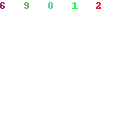News that a European bank borrowed $500M from ECB's 7-day USD funding facility last week intensified concerns in the region's money market conditions. The rise in Euribors, the key euro-prices interbank lending rates, also suggests banks are becoming less willing to lend money to each other. They are also increasingly more suspicious of other banks'balance sheets. Some market participants began to worry about a repeat of the credit crunch in 2008. While it's true that persistence of sovereign debt crisis in the European periphery has deteriorated funding conditions in the 17-nation region, traditional interbank funding rate, LIBOR has been staying well-below the level in 2008, suggesting the current situation is still manageable. However, one should be cautious on further tapping of USD facilities as it would signal a dry-up of liquidity in the banking system.
The ECB disclosed that a single bidder borrowed $500M for a week at a fixed rate of 1.1% on August 18. This is the first time since February 23 that a European bank sought funding using this facility. Usage of the facility has been low as current market rates for banks to obtain USD funding are lower and more flexible. Therefore, the operation is probably treated as the last resort which will only be used when a bank has difficulty elsewhere. The bank's action (share prices suggested that the bank is Société Générale) indicated Eurozone's banking system has been stressed by the prolonged debt problems in peripheral economies.

There are several ways that a European bank can seek USD funding. For the facility mentioned above, the interest rate is expected to be 1-month OIS + 100 bps. While the size is unlimited, the borrowing bank needs to post 12% initial margin. Alternatively, a bank can obtain USD through a USD/EUR cross currency basis swap by funding the euro either through Euribor (around 1.54%) or the ECB repo rate of 1.5%. The total funding costs of using cross-currency basis swap have been less than that through the ECB facility from June 2010 until recently. While the costs of the 3 approaches have converged to very similar levels these days, in normal circumstances, the use cross-currency basis swap is more flexible as it does not require the initial margin of 12%.
Various indicators have shown that banks are increasingly concerned about having exposure in other banks due to suspicion in other banks'balance sheet. The chart below shows that the Euribor-OIS spread soared to the highest level since April 2008 recently, suggesting banks are becoming more reluctant to lend money to each other. The 3-month LIBOR has also picked up, rising to a 6 month high of 0.3117% yesterday.


We tend not to be over worried about the market condition as there's only 1 bank tapping the ECB facility. The amount of $500M was insignificant when compared with $300B in late 2008. However, this acts as an alarm that the interbank market is not functioning well. It's undeniable that widespread concerns about fiscal deficits in some European countries, especially those in the periphery, will continue to drag on bank funding conditions in the region.




No comments:
Post a Comment